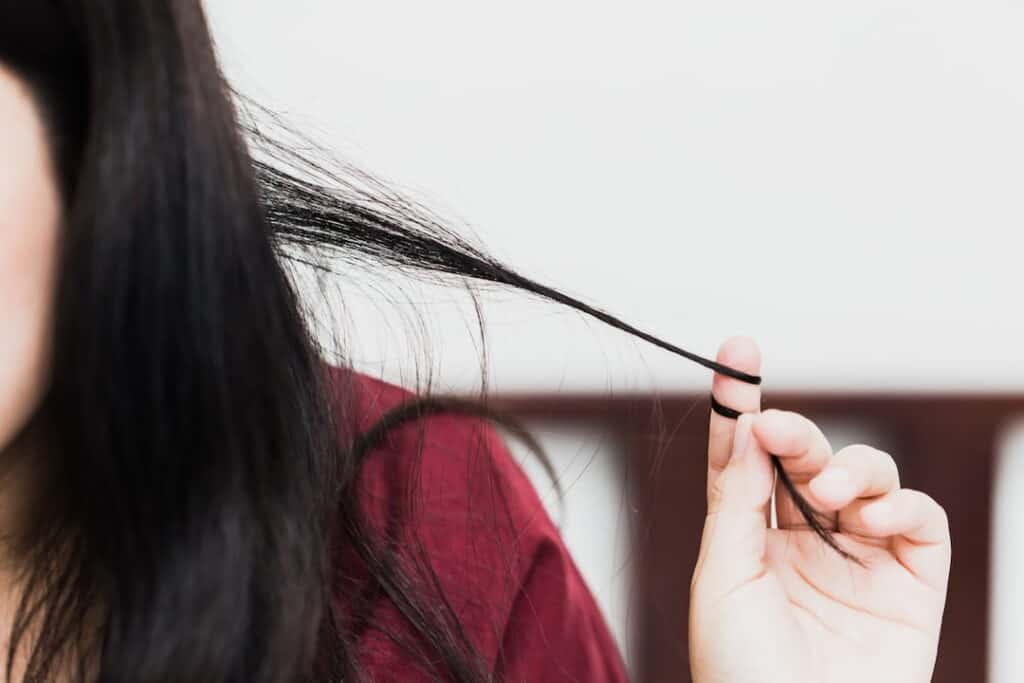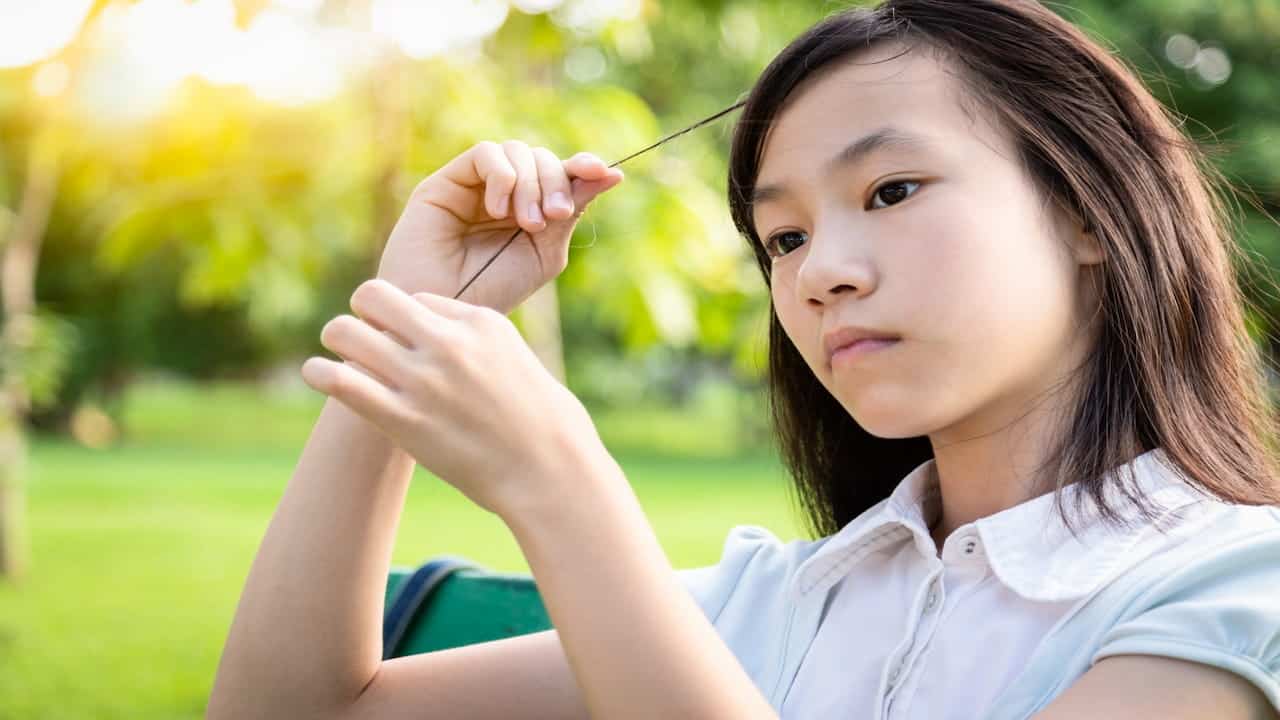Hypnosis for Trichotillomania is an efficient way to reduce the trigger effects of the disorder. For people who pull their hair, hypnotherapy can be a practical way to help them be in control of their trance-like behavior. Individuals who pull their hair only need to redirect that energy towards more beneficial actions. Like other Body-Focused Repetitive Behaviors(BFRBS), stopping hair pulling requires the awareness of the behavior so that you are in control and can choose an alternate response that is not harmful to you.
Hypnosis Downloads
Hair pulling is a habit that is hard to stop because it happens in the subconscious mind. But with hypnosis, you stand a chance at stopping the habit. Through the sensations, you will be aware of what your hands are doing. Hypnosis works on the pattern of the experiences you go through when pulling hair.
If you are looking to stop pulling your hair, Hypnosis Downloads have downloadable audios that may help to stop hair pulling and eyelash plucking. When listening to them, you’ll be aware of what’s going on.
The method empowers your subconscious mind to remember how it feels not to pull your hair and be more dominant in your thoughts. Your mind can cope with the situation too, and you are more in control of your mind. In the trance, you are comfortable with the surroundings and you are in a deeply relaxed state. Similarly, hypnosis can help you with other health issues as well.
You can download the audio and get started on the journey to stop pulling your hair.
Does Hypnosis Work for Trichotillomania?
Hypnotherapy is beneficial in that hypnotic trance helps the individual to deep relaxation and reduces pain. Once you have relaxed, you are free of anxiety and stress. The situation is ideal because you are unlikely to compulsively pull your hair any longer.
Hypnotherapy is beneficial in that hypnotic trance helps the individual to deep relaxation and reduces pain. Once you have relaxed, you are free of anxiety and stress. The situation is ideal because you are unlikely to compulsively pull your hair any longer. Hypnotic skills improve as you get older, and hypnosis for children may take more preparation than for adults.
In the hypnotic trance, your subconscious mind becomes aware of your thought process and actions, and you are capable of doing several things like:
- Control your focus, like watching a TV program hence endure your urges and thoughts quickly, and in a consistent manner.
- Become aware of when and how your hair pulling occurs. So you can control what your hands do.
- Develop an alternate response to your hair pulling actions.
- Identify and come up with a plan to deal with any past situations that contribute to your hair drawing.
- Practice self-hypnosis as an alternate action to the hair-pulling habit.
- Identify people or circumstances that trigger the behavior and practice alternate responses in the circumstances.
- Develop a well-established mechanism to prevent yourself from falling back to the behavior during and after the hypnosis.
- Create self-awareness for confidence and relaxation during trigger situations so you do not pull your body hair.
- Identify an alarm signal for immediate warning for trigger situations and the hair-pulling action.
Hypnotherapy is also essential in helping you to develop confidence and be patient during the healing process. When your hair starts growing back, hypnosis will give you the strength to withstand all the challenges during the process, such as an uneven hairline or slow hair growth.
Hypnotherapy gives you self-awareness of your situation. It builds your self-esteem to handle the circumstances to focus on the healing process even if you fall back to the behavior. You can face the trigger situations and work on them to completely end pulling your hair.
What is the Best Treatment for Trichotillomania?

Cognitive Behavior Therapy
CBT is an efficient method of treatment. It focuses on the trigger situation. It helps identify and change the attitude and response to the trigger circumstances in people with the compulsive hair-pulling disorder. CBT helps the victim develop a positive and more directional thought process to prevent the urge to pull hair. CBT is also effective in other conditions like eyelash pulling, nail-biting, skin picking, and compulsive biting of the inside of the cheek.
CBT inhibits negative thoughts like pulling hair as a remedy or response so you can stop pulling your hair. It addressed the emotional aspect of mending your relationship with people rather than keep things to yourself.

Can Trichotillomania Be Cured?
Hypnosis
Hypnosis is clinically proven to treat Trichotillomania. Trichotillomania sufferers go into a trance every time they are pulling their hair. Hypnosis seeks to address the behavioral aspect as a way to treat the condition. When combined with other treatment programs it shows promising results.
Medication for Compulsive Hair Pulling
Medication is an efficient way of handling Trichotillomania. It is more useful when combined with CBT.
Before you start any trichotillomania medication, it would help if you first consulted a physician. This is because there is no specific treatment that will work for you. Besides, some medicines can have side effects on your health. A medical examination will help determine a suitable treatment plan for you. A medical assessment is also helpful when the person with the disorder is under treatment for other health issues or uses drugs or alcohol. Some medications used in treatment include:
Clomipramine (Anafranil)
Clomipramine affects the brain’s neurotransmitters, norepinephrine, and serotonin. It has anti-obsessional and antidepressants properties. It works well for people with depression in addition to Trichotillomania. Clomipramine is suitable for treating children with Trichotillomania since it is approved for treating obsessive-compulsive disorder(OCD) in pediatrics.
SSRIs
Some FDA-approved Selective Serotonin Reuptake Inhibitors (SSRIs) antidepressants for Trichotillomania include:
- Sertraline (Zoloft)
- Citalopram (Celexa)
- Escitalopram (Lexaproparoxetine)
- Paxilfluoxetine (Prozac)
- Fluvoxamine (Luvox)
The SSRIs are helpful in individuals who exhibit pulling of hair or picking due to OCD, depression, or anxiety. The effectiveness of the SSRIs lasts for several months.
Essential oils
Essential oils like thyme, lavender, and Peppermint will help in treating trichotillomania and aid your hair growth.
Vitamins and diet
Diet affects mental health. Therefore, the kind of food you take has an impact on reducing inflammation. Eating the right vitamins like Vitamin A, B, foods rich in folic acid, and proteins will help in trichotillomania treatment.
Cognitive Behavior Therapy
As noted CBT is one of the most efficient ways of treating the hair-pulling disorder. It uses natural remedies is proven to treat trichotillomania.

Group Therapy
After determining hair pulling trigger situations, e.g., anger, anxiety, stress, etc., treatment becomes easier to do. Group therapy helps to overcome the causes of the trigger situations. It involves helping victims handle the trigger situations, setting goals, coming up with ways to help them into a deeply relaxed state, and developing ways to address causes like stress and anger. By involving the community, Trichotillomania becomes everybody’s problem.
Reducing Alcohol Intake
Reduction of alcohol is helpful. Alcohol increases the tendency to pull hair by reducing the ability of inhibitors that act on the urge to pull hair. It also increases dehydration and build-up of yeast in hair follicles and hence inflammation increases. So the reduction of alcohol will greatly help.

Hypnosis for Trichotillomania Sessions to Stop Eyelash & Hair Plucking
In the first hypnosis session, you provide information about your situation. You discuss how your hair pulling occurs, when, and where it happens. You also explain why you want it to stop. The therapist will then prepare a trance that will help you
In the second session, the therapist makes you go into a trance. The session begins with your eyes open but once you close them, you will feel an unusual comfort before you go into the trance. The trance involves humor, direct and indirect suggestions, and imagery.
The method empowers your unconscious mind to remember how it feels not to pull your hair and to be more dominant in your thoughts. Your mind is able to cope with the situation too and you are more in control of your mind. In the trance, you are comfortable with the surrounding. You are in a deeply relaxed state.

During the third session, the therapist reviews the results of the trance and you repeat the session. This time, with the aspect you felt, is more beneficial. If you have not felt any positive change, it could be that there is something you do not feel like losing because it has been of significant value to you. The therapist will then focus on this issue.
In the fourth session, the hair-pulling will have stopped entirely. If it has not, the therapist will repeat the trance sessions to emphasize you letting go of what holds you back. The therapist can employ self-hypnosis.
Self-Hypnosis
Self-hypnosis follows the same routine as hypnosis only that you perform it yourself. You perform the same techniques but for less time like a few minutes, then you extend the time to up to half an hour. You then repeat the process over and over again to reinforce the results.

The Bottom Line
Hypnosis makes you aware of your subconscious mind and your surrounding. It can help lead a life free of the effects of hair pulling once you accept your circumstances. The hypnosis sessions empower you to help you live with the effects and, more importantly, focus on curbing the urge to pull your hair. A hypnosis session allows you to uncover and efficiently resolve underlying issues that may be related. If you are suffering from Trichotillomania, it will help if you start the hypnotherapy.

